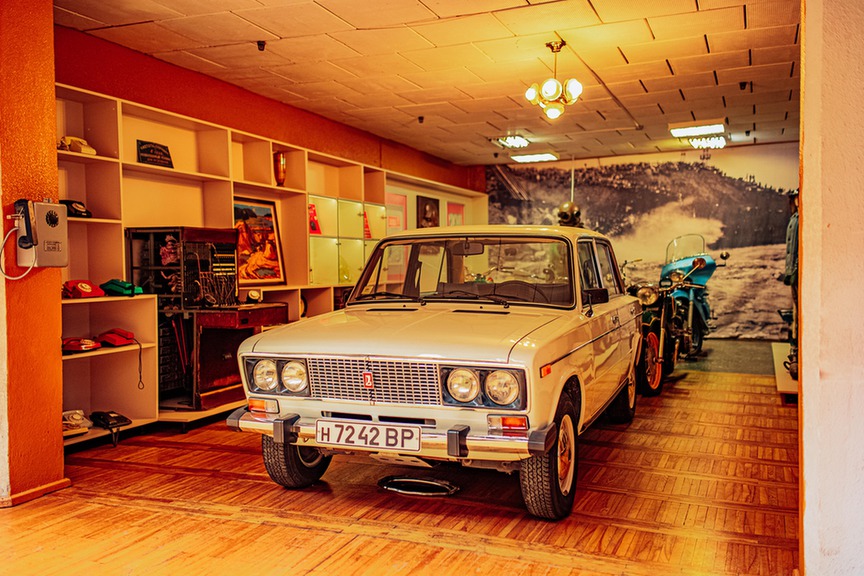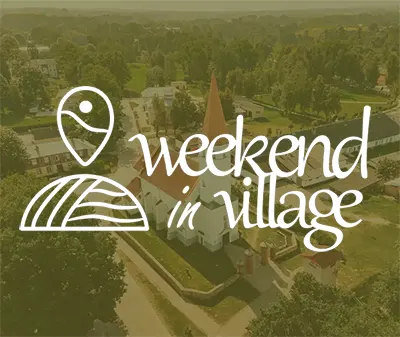
Exhibition “Soviet Years”
Kalna iela 20, Aizkraukle, Aizkraukles novads, Latvija, LV-5101- (+371) 65123351
- (+371) 28305405
- (+371) 26339107
- aizkrauklesmuzejs.lv
- 56.615116, 25.224726
- Waze
- Google maps
- Working hours
- Mon, Tue Non working day
- Wed, Thu, Fri, Sat, Sun 11:00 - 17:00
Aizkraukle Museum of History and Art permanent exhibition “Soviet Years” The exhibition "The Soviet Years" of the Aizkraukle Museum of History and Art is the largest exhibition in the Baltics dedicated to the cultural heritage of the 1950s-1980s, spread over three floors and covering an area of 1060 m2. The exhibition was launched in 2016. A year later, the 1st phase was completed to wide public acclaim. The second phase was completed in November 2018, when the exhibition was inaugurated.
Aizkraukle (in Soviet times called Stučka) is one of the youngest towns in Latvia. It originated in the 1960s as a construction workers' village, linked to the construction of the Plavinas HPP. Stučka is associated with a typical Soviet-era space, and it is natural that it was in Aizkraukle municipality, in the building of the House of Culture built during the Soviet years, that a long-planned exhibition dedicated to this period of history was created over several years. The aim of the exhibition is to show Soviet life in its many facets: the ideologisation of all aspects of life, everyday life, work and leisure, education and culture. Some parts of the exhibition are devoted to the history of the Pļaviņas HPP and the creation of the town of Aizkraukle (Stučka).
There is a large auditorium in the building, which will be used to show Soviet-era documentaries, art films and, of course, cartoons. Soviet-era artworks are also on display throughout the exhibition, and the second-floor gallery in the central space displays outstanding examples of Soviet-era painting. Soviet-era cars are on display on the ground floor of the central space - they always arouse the interest and enthusiasm of visitors. Separate library - Red Corner. Here you can find political information materials, books and magazines published during the Soviet period. A large exhibition depicts everyday life in the Soviet era - the interior of the apartment in the 1950s-1980s - furniture and household items, crockery, textiles and electrical appliances. An entire wall is devoted to TV and radio equipment. There are televisions of the first editions, radio broadcasting apparatus, a radio “Rigonda” manufactured in the Riga radio factory, transistors “Spīdola”, ‘Selga’, “Tūrists”, a record player, records with popular local and foreign music of various years. Tape recorder, slide recorders and slides.
The kitchen display includes milk and cream bottles, memorable shopping nets, coffee grinders, packaging, tea and coffee services. There are also bathroom and toilet articles: wash tubs, a Riga washing machine and other household appliances. There are also vouchers for drinks, cigarettes, soaps and detergents. In the office of a party functionary, you can not only leaf through the chronological collection of the legislation in force in the Latvian SSR (1961-1986), but also take a look at the original content of the “barinis”. Separate rooms are devoted to emigration, Soviet repression, medicine, state structures (militia, army, etc.), tourism and sport. The exposition dedicated to culture and amateur arts in Aizkraukle district will certainly be of interest to many visitors. The room dedicated to childhood and education will amaze the younger generations and evoke nostalgic memories for the older ones. One of the themes it reflects is ideological upbringing. There are school uniforms, textbooks, posters, memory books and reports on the work done in the collective farms. Of course, there will also be a childhood corner with toys and other baby paraphernalia.
 This virtual toure has been produced as part of the project LL-00061 "Digitally accessible and attractive Lost Culture Heritage tourism destinations in Zemgale and Northern Lithuania" (Reclaimed History), which is co-funded by the European Union under the Interreg VI-A Latvia-Lithuania Programme 2021-2027. Its contents are the sole responsibility of Aizkraukle local municipality and do not necessarily reflect the views of the European Union.
This virtual toure has been produced as part of the project LL-00061 "Digitally accessible and attractive Lost Culture Heritage tourism destinations in Zemgale and Northern Lithuania" (Reclaimed History), which is co-funded by the European Union under the Interreg VI-A Latvia-Lithuania Programme 2021-2027. Its contents are the sole responsibility of Aizkraukle local municipality and do not necessarily reflect the views of the European Union.
- Aizkraukle municipality and Koknese Tourism Information centre
1905. gada iela 7, Koknese
(+371) 29275412, (+371) 65161296 - Aizkraukle Tourism Information point
Lāčplēša iela 4, Aizkraukle
(+371) 25727419 - Jaunjelgava Tourism Information point
Jelgavas iela 33, Jaunjelgava
(+371) 27366222 - Pļavinas Tourism Information point
Daugavas iela 49, Pļaviņas
(+371) 22000981 - Skrīveri Tourism Information Point
Daugavas iela 85, Skrīveri, Skrīveru pagasts
(+371) 25661983 - Staburags Tourism Information point
Staburaga saieta nams, 2. stāvs, Staburags, Staburaga pagasts
(+371) 29892925 - Nereta Tourism Information point
Dzirnavu iela 5, Nereta, Neretas pagasts
(+371) 26674300 - Mazzalve Tourism Information point
Skolas iela 1, Ērberģe, Mazzalves pagasts
(+371) 26156535 - Irši Manor Barn - Magazina
Irši, Iršu pagasts
(+371) 26344757


























